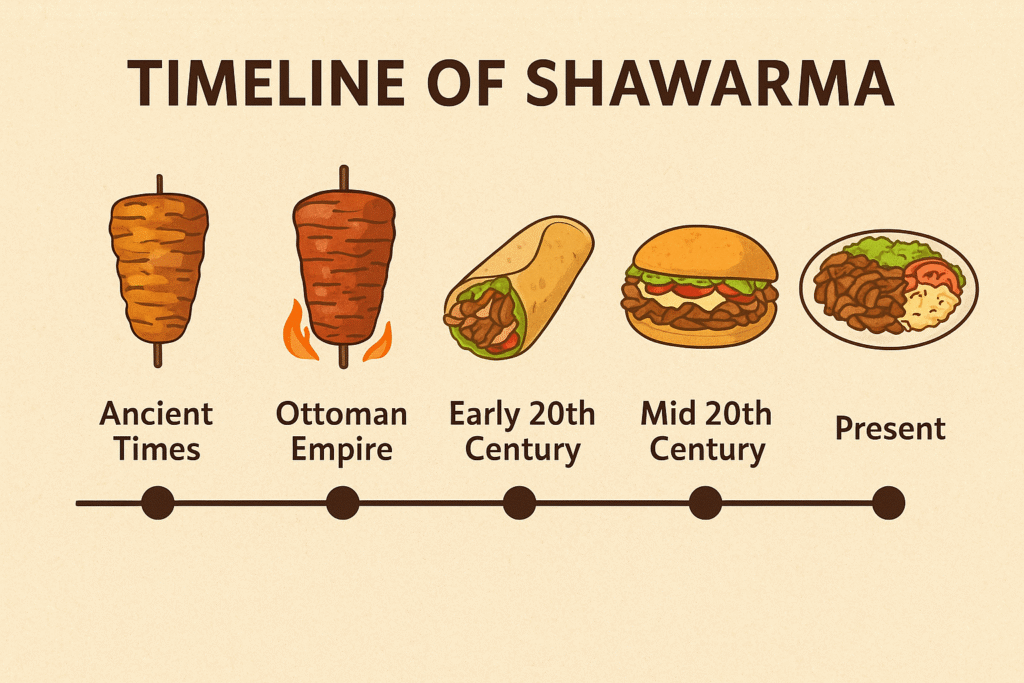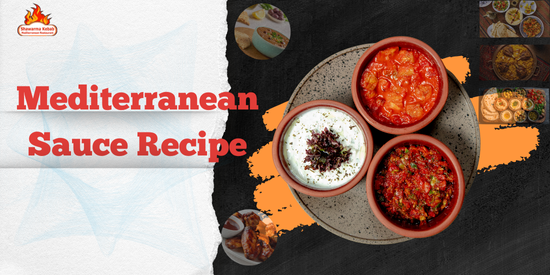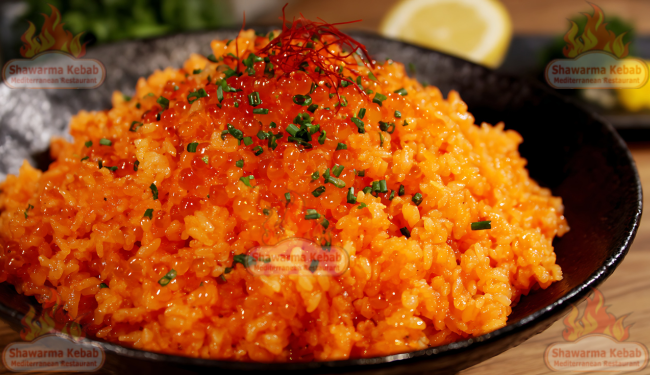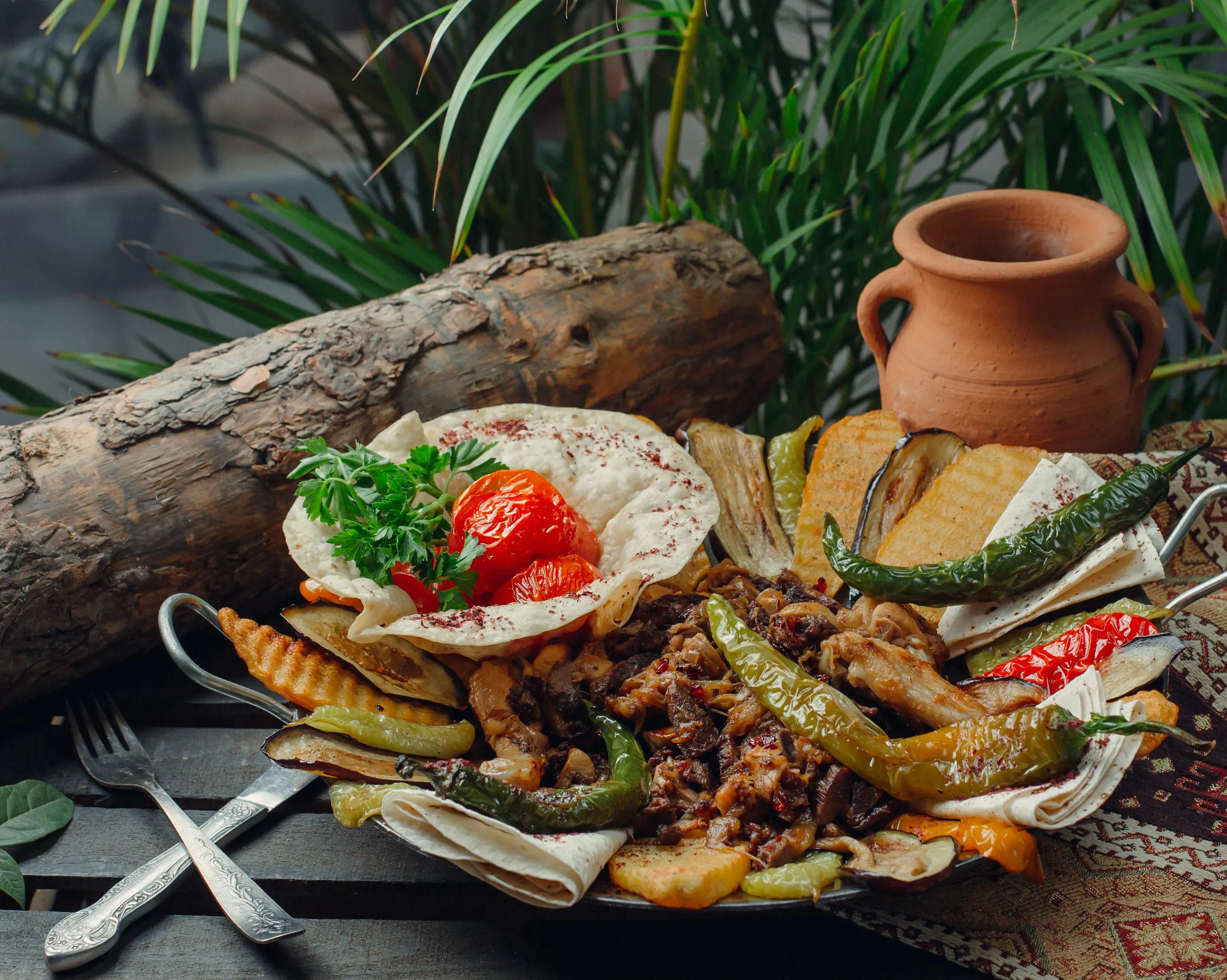The first thing that comes to mind when you hear of Middle Eastern cuisine is shawarma. Its enticing aroma, juicy marinated meat, and distinctive cooking method have made it a global phenomenon. Shawarma, though, is more than a favorite street food; it’s an ancient cuisine steeped in rich cultural heritage. In this blog, we’ll explore the history of shawarma in the world, its origins, and how it influenced modern Middle Eastern cuisine.
What is Shawarma?
Shawarma is marinated meat food, traditionally lamb, beef, or chicken, stacked on a vertical spit and grilled for hours to fall-apart tenderness. It is thinly cut and served in flatbreads like pita or laffa, occasionally with tahini, hummus, pickles, and raw vegetables. Today, there are thousands of shawarma versions across the globe, ranging from the original Middle Eastern wraps to fusions with local cuisine.
The Ancient Roots of Shawarma
Shawarma has been around since the Ottoman Empire in the 18th or 19th century. It is believed to have been derived from Turkish doner kebab, a similar preparation made of meat cooked on a rotating spit. The concept was brought to the Levant, where it began to taste like it did in the native region and came to be referred to as shawarma.
Is shawarma Lebanese? Even though Lebanon played an integral role in popularizing shawarma, shawarma is not Lebanese but rather a shared culinary heritage of Arab nations, Turkey, and the Mediterranean. This was one of the reasons shawarma is both Turkish-influenced food and Arabic cuisine.
Is Shawarma Mediterranean?
The question that most food enthusiasts have is, is shawarma Mediterranean? Though the origin of shawarma is Middle Eastern, the food and ingredients are in accordance with Mediterranean cuisine principles. Vegetables, olive oil, coriander, cumin spices, and grilled meat are all properties of the Mediterranean diet. Therefore, shawarma may be termed as being midway between Middle Eastern and Mediterranean food culture.
Beef Shawarma Origin and Evolution
While shawarma is made with chicken, lamb, or even turkey, beef shawarma is inextricably linked to Levantine cuisine. Beef shawarma is marinated in a mix of spices, vinegar, and sometimes yogurt to produce tender but flavored strips that distinguish beef shawarma from the rest of grilled meat. Beef shawarma spread worldwide over time, especially in the West, where it is now present in every Middle Eastern restaurant.
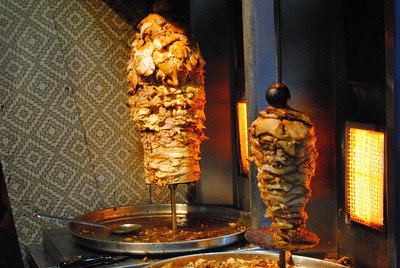
The Historical Timeline of Shawarma
Shawarma’s success was gradual but consistent. During the early 1800s, the method of layering and rotating meat transformed street food throughout the Ottoman Empire. By the late 19th century, shawarma variations in Syria, Lebanon, and Palestine started adding special spice mixtures and serving styles.
During the 20th century, Middle Eastern migration brought waves of shawarma to Europe and the Americas, where locals and food enthusiasts alike fell in love with the dish. This timeline is important in illustrating how a simple culinary innovation created worldwide culinary traditions.
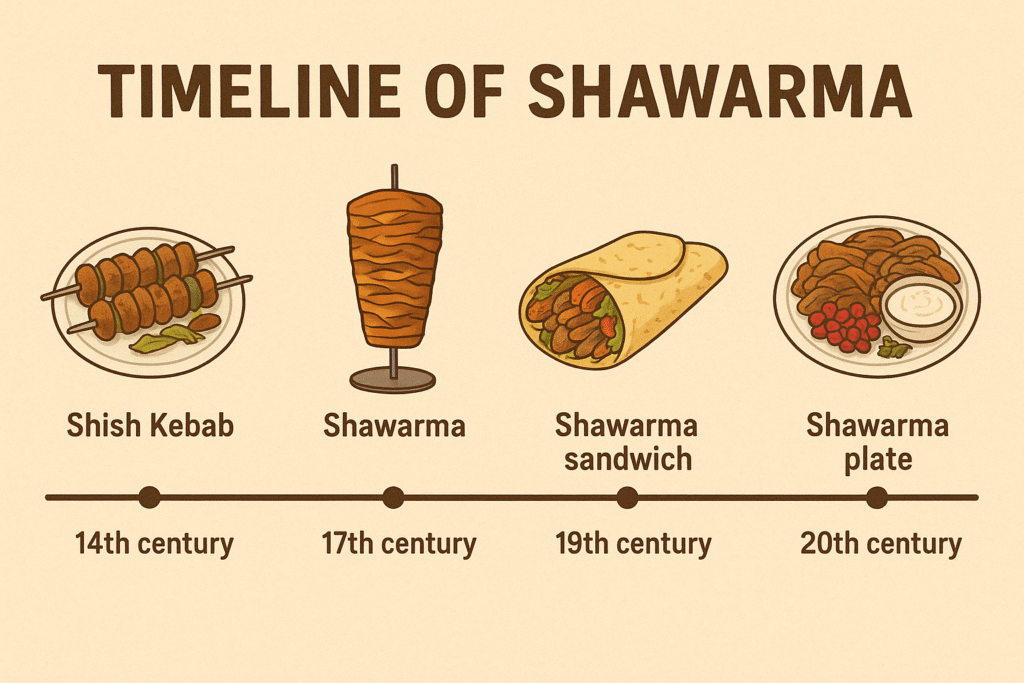
Regional Shawarma Variations
While shawarma began in the Middle East, it has developed into myriad regional varieties. Garlic sauce and pickled vegetables are popular additions in Lebanon. In Egypt, shawarma tends to come with tahini-based dressings. In Gulf states, clove and cardamom are employed by the cooks for the scented version.
Even outside the Middle East, alternatives have also emerged, such as shawarma tacos in Mexico or shawarma pizzas in North America. These are a testament to the adaptability of shawarma without losing its roots.
Shawarma in Pop Culture
Shawarma has even penetrated pop culture. A classic instance is in the post-credits scene of The Avengers film in 2012, where the superheroes quietly enjoy shawarma after rescuing the world. Such a scene sent the world into a boom that made numerous fans go searching for “shawarma near me.” Today, shawarma serves as a cultural icon not just of cuisine but of commonality and global interest in Middle Eastern cuisine.
The Global Spread of Shawarma
The 20th century saw a global fascination with Middle Eastern cuisine, fueled in part by migration trends and cultural exchange. Shawarma traveled with Levantine immigrants to Europe, North America, and the rest of the world. Today, it is a safe bet that typing “shawarma near me” into an internet search will yield dozens of results in any city from New York to London.
Its global popularity lies in the fact that it can either be eaten as an instant street food snack or as a sophisticated sit-down meal. People also search for Shawarma as “Swama Food”, which shows how widely it is recognized across different cultures and how search variations reflect its global popularity.
The Cultural Significance of Shawarma
Shawarma is not just food; it’s an icon. In Middle Eastern countries, shawarma stands are cultural hubs where families and friends gather. The aroma of meat being roasted transported over crowded streets is a reflection of the region’s vibrant food culture. Shawarma represents hospitality, tradition, and the pleasure of shared meals.
Its popularity in the West has also brought many to the palate of Middle Eastern cuisine. Shawarma is a gateway for many to a whole world of Middle Eastern cuisine consisting of falafel, hummus, tabbouleh, etc. Thus, shawarma is a Middle Eastern food ambassador of the world.
Shawarma’s Role in Modern Middle Eastern Cuisine
Contemporary Middle Eastern cuisine is one of tradition blended with innovation, and shawarma sits at its center. Although the simple idea of meat roasted vertically has not changed, innovative twists have been added by chefs. Presently, there’s shawarma flavored with interesting spice mixes, vegan variations containing jackfruit or mushrooms, and even high-end versions available in fine dining restaurants.
Shawarma has had a spillover effect on other foods as well. Its marination techniques and spice mixes are also used today in grilled fish, roasted vegetables, and fusion sandwiches. Essentially, the history of shawarma has extended to the broader set of Middle Eastern cuisine.
Shawarma and Health: A Contemporary Perspective
With lean meat and fresh sides, shawarma is a healthy meal when prepared with care. Recipes prefer grilling over frying, so it is less fat. Serving shawarma in whole-wheat pita with fresh salads and hummus turns it into a balanced meal. This health-oriented approach aligns with the growing need for healthy yet tasty food globally, making shawarma an integral part of modern diets.
Why Shawarma Stands the Test of Time
Few dishes have become as international in popularity as shawarma has today. Its versatility, unique taste, and high cultural significance ensure its ongoing popularity in an increasingly changing food world. Be it taken from a Beirut street cart, a Parisian café, or a food truck, shawarma has the taste of the past delivered in every bite.
FAQs: Your Shawarma Questions Answered
Who invented the shawarma?
Shawarma originated in the Ottoman Empire and is believed to be a derivative of the Turkish doner kebab.
Is shawarma Arab or Turkish?
It was created by both civilizations. It originated as a doner kebab in Turkey and spread to Arab countries, where it became shawarma.
What is the cultural significance of shawarma?
Shawarma symbolizes tradition and community in Middle Eastern society. It’s a popular street food eaten during social gatherings and festivities.
Who created the shawarma?
Although nobody is certain to have created it, it was formulated from shared food practices across the Ottoman Empire and the countries of the Levant.
When was shawarma created?
It is believed to have been created in the 18th or 19th century when the Ottoman Empire existed.
Conclusion
The history of shawarma is the history of cultural exchange, adaptation, and enduring flavor. From its Ottoman roots to its place in modern Middle Eastern cuisine, shawarma continues to be a delicious marvel on earth. Its evolution from neighborhood treat to global phenomenon is a testament to a heritage that unites tradition and modernity.
If you’re craving authentic flavors, visit Shawarma Kebab Restaurant for a true taste of history served with modern flair. Experience the magic of shawarma like never before!

